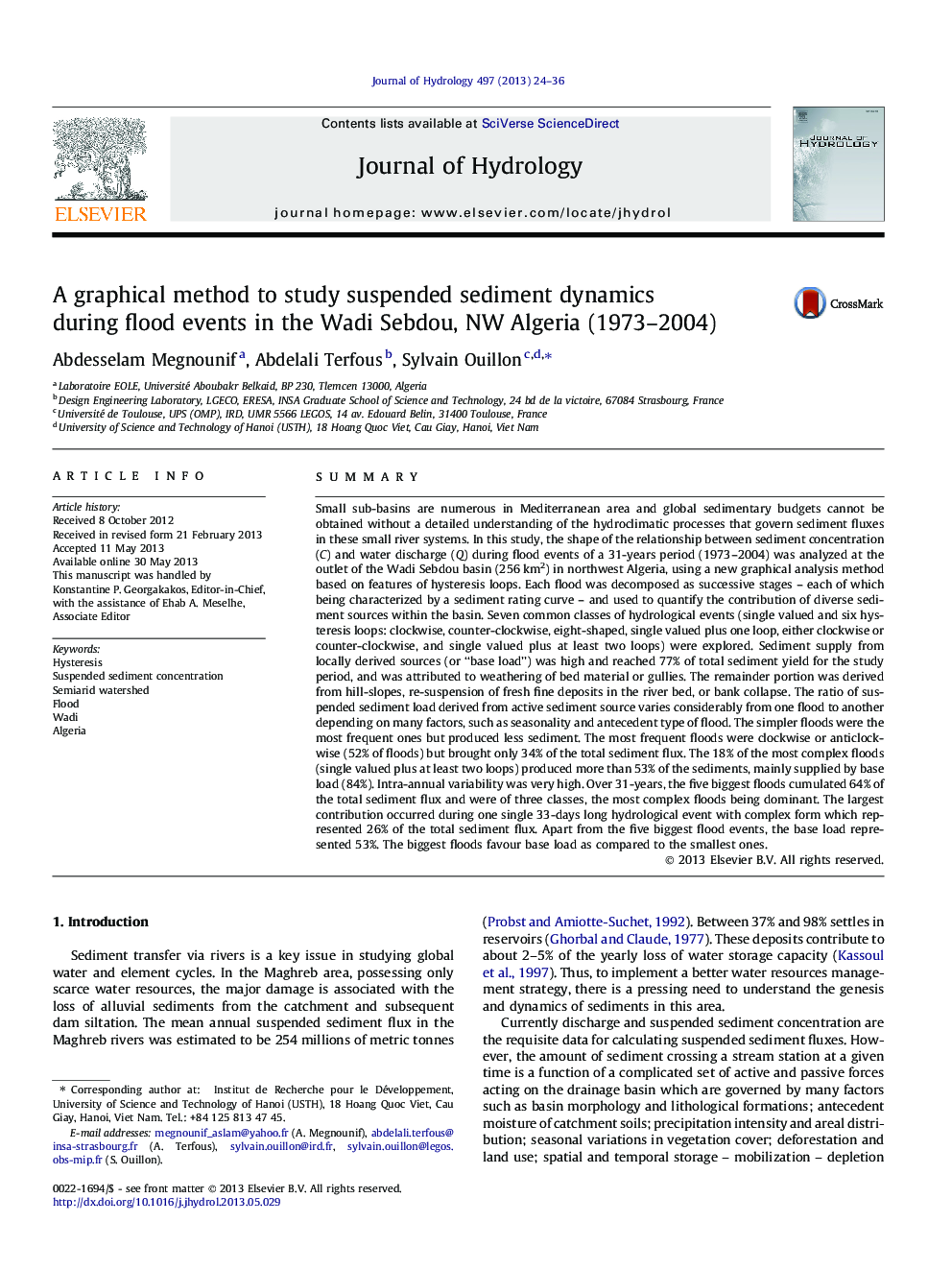| کد مقاله | کد نشریه | سال انتشار | مقاله انگلیسی | نسخه تمام متن |
|---|---|---|---|---|
| 4576233 | 1629951 | 2013 | 13 صفحه PDF | دانلود رایگان |

• A new graphical analysis method is proposed and applied to study C–Q hysteresis loops.
• The method enables to quantify base load and additional sediment contributions.
• The variability of flood types, sediment flux and origin is analyzed over 31-years.
• The complex floods produced >53% of sediments, supplied by base load (84%).
• The simpler floods were the most frequent ones but produced less sediments.
SummarySmall sub-basins are numerous in Mediterranean area and global sedimentary budgets cannot be obtained without a detailed understanding of the hydroclimatic processes that govern sediment fluxes in these small river systems. In this study, the shape of the relationship between sediment concentration (C) and water discharge (Q) during flood events of a 31-years period (1973–2004) was analyzed at the outlet of the Wadi Sebdou basin (256 km2) in northwest Algeria, using a new graphical analysis method based on features of hysteresis loops. Each flood was decomposed as successive stages – each of which being characterized by a sediment rating curve – and used to quantify the contribution of diverse sediment sources within the basin. Seven common classes of hydrological events (single valued and six hysteresis loops: clockwise, counter-clockwise, eight-shaped, single valued plus one loop, either clockwise or counter-clockwise, and single valued plus at least two loops) were explored. Sediment supply from locally derived sources (or “base load”) was high and reached 77% of total sediment yield for the study period, and was attributed to weathering of bed material or gullies. The remainder portion was derived from hill-slopes, re-suspension of fresh fine deposits in the river bed, or bank collapse. The ratio of suspended sediment load derived from active sediment source varies considerably from one flood to another depending on many factors, such as seasonality and antecedent type of flood. The simpler floods were the most frequent ones but produced less sediment. The most frequent floods were clockwise or anticlockwise (52% of floods) but brought only 34% of the total sediment flux. The 18% of the most complex floods (single valued plus at least two loops) produced more than 53% of the sediments, mainly supplied by base load (84%). Intra-annual variability was very high. Over 31-years, the five biggest floods cumulated 64% of the total sediment flux and were of three classes, the most complex floods being dominant. The largest contribution occurred during one single 33-days long hydrological event with complex form which represented 26% of the total sediment flux. Apart from the five biggest flood events, the base load represented 53%. The biggest floods favour base load as compared to the smallest ones.
Journal: Journal of Hydrology - Volume 497, 8 August 2013, Pages 24–36